
The Legend of Heroes: Trails into Reverie Review
This review will mention minor spoilers from The Legend of Heroes: Trails of Cold Steel IV and Trails to Azure, as well as general discussion of the story premise of Trails into Reverie
More than any other game in the series thus far, The Legend of Heroes: Trails into Reverie is not at all a game for series newcomers. That's allowed, of course, but it makes it somewhat tricky to write about.
The majority of people reading this review likely already know the ins and outs and nitty-gritty details, but for the gap of individuals who don't, Trails into Reverie is the tenth mainline entry of the Trails series, which started all the way back in 2004 with the release of Trails in the Sky in Japan. Without going into the complete history of the series, each game comprises one long continuous narrative that is still ongoing.
While the specific sub-arcs have shifted perspective and setting, each individual entry is referenced in subsequent games with the assumption that the player is aware of past events, having ostensibly played them. Outside of the recommendation of starting from the beginning and playing in sequence, certain entries are better suited as entry points than others -- most notably either with the recently localized Trails from Zero or with Trails of Cold Steel, as each introduces a new primary cast with a new part of the overall setting.
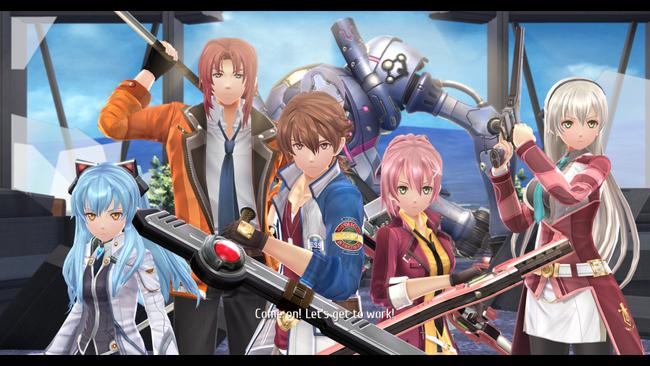
To help establish the groundwork going forward, Trails from Zero and Trails to Azure comprise the "Crossbell Arc" while Trails of Cold Steel I through IV comprise the "Erebonia Arc". Trails into Reverie serves as the concluding entry of both of these arcs. This means that anyone going into Trails into Reverie should most likely have at least 6 completed games under their belt -- four at an absolute minimum if Cold Steel III was used as a starting point. Of course, playing games out of sequence is always an option as well, with a wiki synopsis or similar on the side -- but there's no strong reason to in this case. Just to state it clearly, I have played every prior series entry to completion before starting Trails into Reverie.
After a short prologue, Trails into Reverie starts a few months after the event of Cold Steel IV as Crossbell is just about to declare its sovereign independence following the events of the last several years. However, things don't go as planned as many prior antagonists from previous games, led by Rufus Albarea, crash the signing party to declare that hostilities would continue while Crossbell would serve as the heart of a new united nation. Titling himself the Supreme Leader, Rufus and his newly anointed Ebon Defense Force serve as the primary antagonistic force for the majority of Reverie's runtime. This, of course, leads to confusion amongst the game's many protagonists: why has Rufus not acquiesced following his sound defeat in Cold Steel IV, and why have others thrown their lot in with him? How does the EDF have access to the many archaisms, soldats, and war supplies despite no longer being resourced by the Erebonian Army or Black Workshop? For the first several chapters of Trails into Reverie, these questions are pervasive and are addressed very slowly.
Needless to say, as the culmination of several story arcs, Trails into Reverie has an absolutely enormous cast of characters. From a narrative perspective, Reverie shifts things up from previous entries by introducing the Trails to Walk mechanic. This is a menu that can be eventually opened at any time with a shortcut button to change the perspective between three "parties" of characters: Rean Schwarzer from the Cold Steel series, Lloyd Bannings from Zero/Azure, and the mysterious masked "C" who has taken the mantle of the character from the original Imperial Liberation Front from the Cold Steel series.
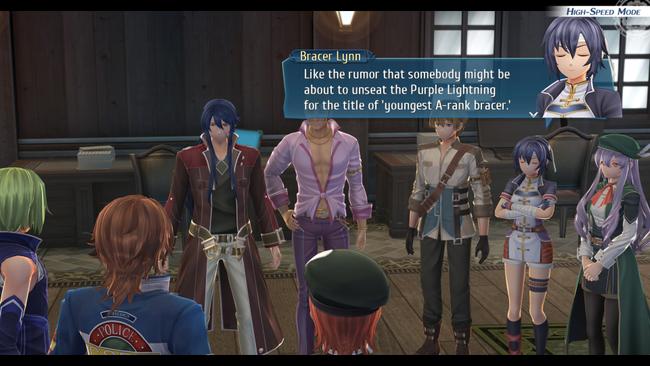
By opening up the Trails to Walk menu, the player can take control of Rean's group, Lloyd's group, or C's group, albeit with some clear limitations. As customary to the series, Reverie's plot is still divided into Chapters, and each character's Route has to be at the chapter's conclusion in order for the game to move onto the next. On top of that, there are several instances in the game where the selection between routes is somewhat automated, where the player has to progress chapter portions to a certain place in order to make sure that the parties interact at a time and place appropriate to the narrative.
The result of this is that the Trails to Walk system as a whole was far less interesting than I thought it might have been going into the game. While the separation of the parties into three distinct groups does allow for some spacing between the games ~40 playable characters and offers a little bit of gameplay freedom, it was somewhat ineffective from a narrative standpoint in that it often makes the most sense to just select a route and play it through until the game forces a switch. Some of the limitations are removed on subsequent playthroughs, but for an initial run of the story, there's really no incentive to switch routes before the player is required to. I feel the game would have been just as well off if the chapter divisions were declared for the player and the route switching was just done on a chapter-by-chapter basis.
In addition to the mechanic of the Route-switching being a bit ineffective, the narrative in-general doesn't really support it. Most of the significant story elements are sequestered away into Rean's route -- as I was playing through Trails into Reverie, at times I truly felt like I was really just playing Trails of Cold Steel V. While Lloyd and company do get a decent amount of screentime to shine, it's hard to not come away as if Lloyd's group ended up with the game's B or C plot, though the Crossbell characters do receive a little more focus in the game's prologue and finale.
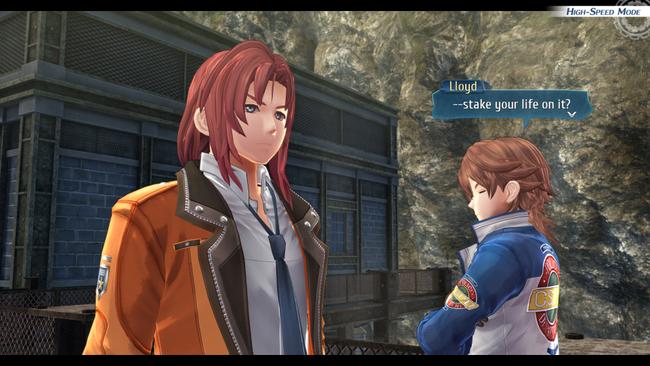
As for 'C' and the new characters introduced in his route, I found myself fairly whelmed. 'C's identity is actually revealed fairly early in the game's runtime, but most of the mysteries and intrigue in his route mostly boil down to trying to piece together the explanation for the events of the game's prologue and introducing us to the primary new cast members: Swin, Nadia, and Lapis. While the character interactions between these three and 'C' is a strong component of the game and plays to one of the series overarching general strengths, it's hard not to come away wishing that some of these new characters had a little bit more breathing room to be introduced into the fold.
Instead, these new cast members end up having to share a significant amount of the game's runtime with several long-established characters like Rean and Lloyd. The dynamic between Swin, Nadia, Lapis, and C was a highlight of the story for me, but only for the limited time that they aren't crowded up by the other on-going plot threads.
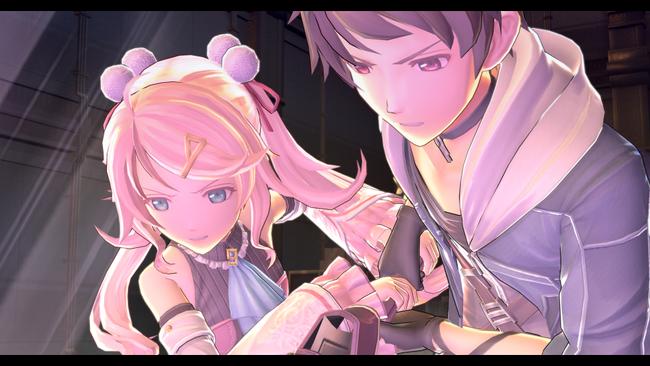
While the Trails to Walk mechanic is a novel way to try to incorporate a huge cast into the larger story, it's unfortunate that the story in Reverie takes very long to get going, despite being late in the overall series chronology. Despite ostensibly being a sort of epilogue entry to the series, Reverie introduces (and then quickly resolves) a lot of new story facets in quick succession after a lengthy wind-up. Much of the first three chapters of Reveries are spent with much of the cast perpetually confused about why things are happening while I as a player was simply waiting for answers to finally be given.
The Ebon Defense Force serves as the main antagonists of Reverie for most of the initial runtime, and most of the details about how they came to be are left obscure for several hours of story. In addition to this, Reverie ends up recycling a few antagonists from previous games in a manner that feels somewhat contrived. It's difficult to describe without going into explicit spoilers, but in general, it feels like Reverie wanted to leverage the series history without really committing to constructing a new conflict. In short, most of the early chapter climaxes end up feeling like filler, especially once some of the later chapter revelations are finally provided after a couple of dozen hours of playtime.
Around Chapter 4 (the last chapter before the finale), Reverie finally reveals the concept of Elysium, a sort of phenomenon that was birthed out of the intersection of the world's septium veins and the creation and development of the globe-spanning Orbal Network. While I do want to avoid going into specific details of what Elysium is from a story standpoint, Elysium's presence is effectively used to explain away all of the prior (and subsequent events) of Reverie and ends up feeling incredibly contrived.
Through some lengthy lore dumps in the game's final chapters, Reverie does admittedly do some neat things in the ways that it taps into key story elements from Trails of Cold Steel IV and Trails to Azure, specifically how Trails to Azure's climax re-contextualizes the very initial events of Trails from Zero -- if you know, you know. While some of the final elements in Reverie do have some degree of payoff by the end, I ended up feeling disappointed that Reverie spent so much of its runtime simply dragging its feet, not to mention that it was accomplished more effectively in prior entries.
Mechanically speaking, anyone who's played any Cold Steel entry will already know how the gameplay progression generally unfolds in the Trails series, and Reverie largely plays it the same from the battle-to-battle perspective. The main addition that Reverie makes on this front is the addition of "United Front" attacks. These are a sort of party-wide Craft in which characters outside of the active party contribute to the fight in what is effectively a super-Burst attack, only it utilizes the Assault gauge (the pinkish bar you can fill in the field by breaking containers and use in preemptive strikes) instead of Brave Points.
Just as Brave Orders attempted to accomplish in Trails of Cold Steel III, United Fronts are again a somewhat clever way to try to incorporate the larger cast into the battle system, since only four party members can be present on the field at once. At least one character needs to be in the reserve "Support" position, meaning that a minimum of 5 party members are needed in order to utilize the new system.
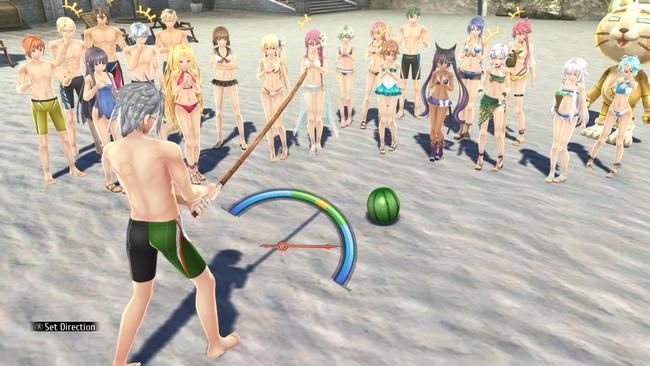
However, by being able to initiate these new field-wide attacks fairly frequently in addition to the normal onslaught of S-Crafts, Burst Attacks, and high-level arts, I found that this usually meant that battles were typically a rotation of using these large sweeping attacks dependent on whether I had extra CP (for S-Crafts) EP (for Arts), BP (for Burst Attacks) or Assault Gauge pips (for the new United Front attacks).
Player and enemy positioning hardly ever mattered, almost every craft or spell would hit every target on the field except in very niche circumstances, and options to restore any of the multiple above resources are plentiful. While I am sure some of this could be mitigated by initiating a playthrough on something like Nightmare difficulty, a playthrough on Normal or lower hardly required any real strategy or resource management.
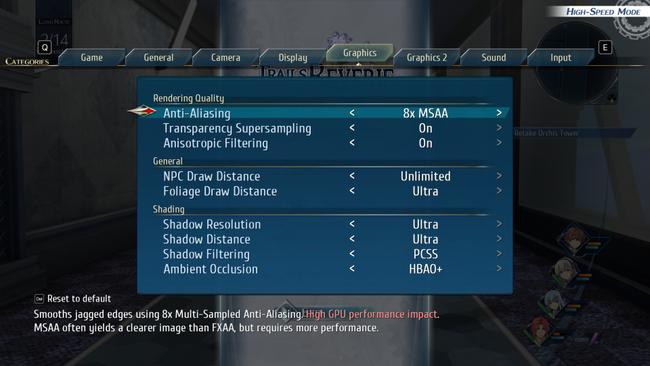
The last major component of Trails into Reverie is the implementation of the (True) Reverie Corridor, a sort of alternate-dimension-tiered dungeon in which the three-split cast can crawl and improve their abilities and reveal a few additional narrative elements. The most direct comparison to the Reverie corridor is that of Trails in the Sky the 3rd's Phantasma (a comparison that is aptly made in-game as well).
I more-or-less adored Trails in the Sky the 3rd, so anything even remotely similar to that experience was always going to be a highlight for me. The Reverie Corridor even has a sort of "Door" mechanic called Daydreams that provide little independent story snippets to flesh out some of the tertiary narrative elements of the game. Being able to use a combined cast among the three Routes in this manner from the menu at any time provided a bit of freedom that I was excited to take advantage of.
However, unlike Trails in the Sky the 3rd which capped out at 15 or so total playable characters (a few of which primarily being glorified cameos), the overall cast in Trails into Reverie quickly approaches 40 playable characters, and only increases past that past the credits. While having some similar characters being split among the routes in the Trails to Walk system ends up working okay, having the whole cast present in the Reverie Corridor becomes unwieldy very quickly.
Of course, having an unwieldy cast size is not a new phenomenon after Trails of Cold Steel III and IV, but having the entire cast present and playable at once through the Reverie Corridor ends up exacerbating the consequences of the giant cast size. Of course, only 4 characters can be present in the party at once, and add a few more to flesh out the support or Add-On slots -- the result is simply that most of the playable cast ended up being ignored. There were several characters I simply never used unless I was required to for a small number of battles.
Even the final ultimate post-game battle only requires three parties of four characters each -- if you factor in a 4-character reserve for each of the three parties to total 24 total characters, you're still (somehow) looking at barely half the cast for one ultimate encounter.
Reverie attempts to mitigate some of the cast-bloat consequences by giving each party member easily obtainable unique obtainable Armor, Boots, and eventually even Accessory slot equipment. (gear that is explicitly marked as for a specific character only). While this does manage to make the prospect of gearing several dozen characters a little bit less daunting, the implementation is a bit is a double-edged sword in a way. By having a specific set of gear assigned to either Lloyd, or Rean, or Tio, or whomever, it takes away any real decision-making except in very niche cases.
Not sure how to gear up a certain character in the True Reverie Corridor? Simply outfit them with their bespoke-ly assigned gear that you can purchase straight from a vendor and you don't really have to think about it. While this approach may not work in attempting to do some extreme challenges such as something like a Trial Door on Nightmare or Abyss difficulty, it manages to serve as an efficient go-to the vast majority of cases.
Despite that misgiving, being able to experiment with different characters in the Reverie Corridor did manage to provide some of the game plate-spinning excitement that I experienced with Trails in the Sky the Third. In addition to the semi-random dungeon splunking, the Reverie Corridor also serves as Reverie's centralized location for mini-games such as Vantage Masters, Pom Pom Party, and the like. Dabbling in the corridor will offer benefits to Link Abilities, United Front abilities, and the like, so it's worth at least spending a little more than the requisite amount of time there. The post-game content in the Reverie Corridor is also a fun treat for series fans and well worth the time spent after the initial credits.
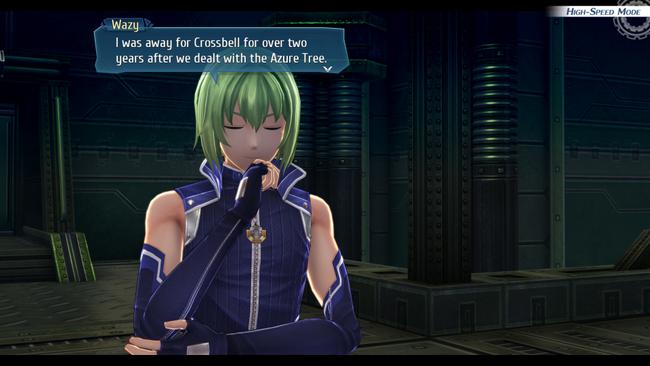
As a final note for the official English release of the game, Trails into Reverie falls into a pretty typical place regarding its English localization. While I cannot speak to the accuracy of the English script relative to the original Japanese, it's very clear that a lot of the prior characterization in Cold Steel III and IV are present here. Lechter will use phrases like "Raging Hard-On", Ash will use phrases like "Tight" and cut off the last consonant of many words as he speaks, Altina will speak very formally, and so on. I've already seen some discussion online regarding the naming conventions of certain locations relative to the previously-accepted naming scheme, but I'm not truly an authority to speak to that as a monoglot. In short, Reverie is par for the course for NIS America localized titles in the series, for better or worse, and likely won't swap any opinions over the fence one way or the other. As a note, the Japanese voice-over is selectable from the menu at any time.
As has been somewhat emblematic of prior Cold Steel entries, voiced lines are often a bit sporadic, with certain lines in the middle of a scene being voiced as a sort of implied emphasis, only for the voice-over to disappear after a few line reads. A majority of the game's smaller scenes and side-content remain unvoiced. I did notice a small number of minor text errors in the unvoiced text boxes, but considering the scope of the game's overall script, these were usually minor relative to the grand scheme of things and were not prevalent enough to detract from my enjoyment of the game.
As someone who is a bit of a lapsed fan of the Trails series and greatly enjoyed the recently localized Trails from Zero and Trails to Azure, I was partially hoping to have Reverie be the game to reignite that spark I used to have for this series. Instead, after completing the game, I find myself mostly grateful to move onto brighter pastures after this entry ended up spending most of its run-time spinning its wheels, while its few contributions to the overall series largely fell flat.